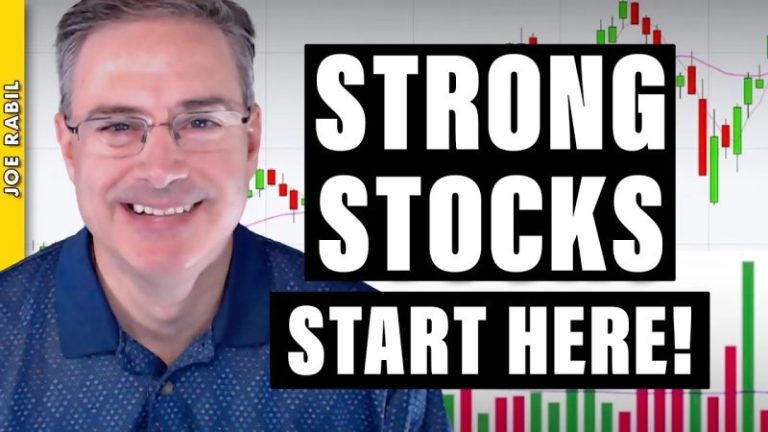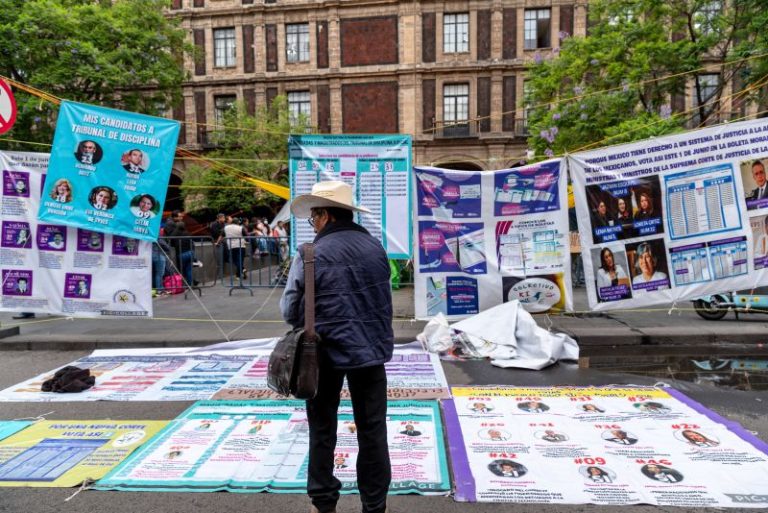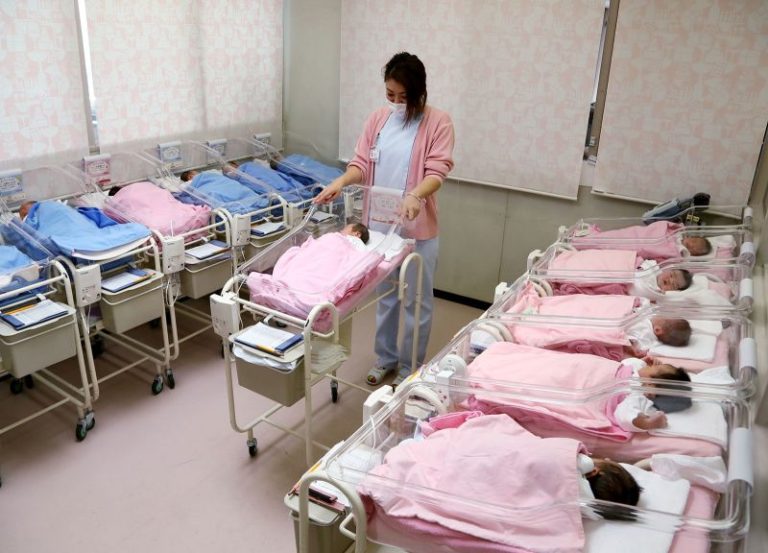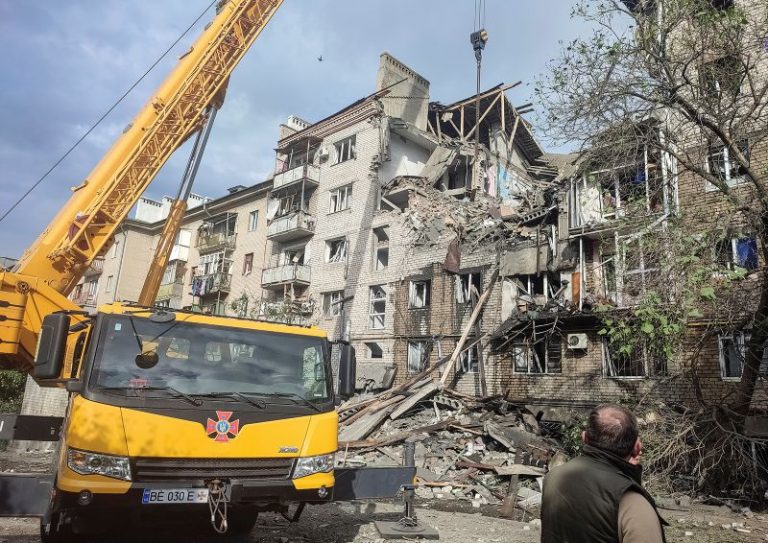A year ago, Andry José Hernández Romero left Venezuela to seek a better future in the United States.
He wanted to continue growing his career as a makeup artist. He left behind his lifelong home in the little town of Capacho Nuevo, where he lived with his mother, father, and younger brother.
On May 23, 2024 – just two days after his 31st birthday – Andry left with the hope of one day opening a beauty salon in the US, or making a living from one of his other passions: design and tailoring. But all that hope has turned to anguish.
As of now, there is no certainty about what will happen to him or the rest of the detainees in the Terrorism Confinement Center (Cecot) prison.
“Please bring him back, it’s been two months of anguish. We can’t take it anymore. Please, put your hand on your heart and send him back. This anguish is eating us alive … I hope these people say, ‘Yes, he’s coming back.’ That they say something, anything, just a little thing,” pleads Alexis, 65.
Who is Andry José Hernández Romero?
Andry Hernández Romero turned 32 this Wednesday. He is from Capacho Nuevo, a town in the Venezuelan border state of Táchira that, according to official estimates, has fewer than 30,000 inhabitants. He is passionate about design, makeup, costume making, and acting. These artistic skills have made him well known in his hometown, where he has been an essential part of a local festival.
Since he was 7, Hernández has participated as an actor in the “Reyes Magos de Capacho” festival, which a few months ago celebrated its 108th anniversary and is a keystone cultural event in both Táchira and all of Venezuela.
In his teens and adult life, Hernández continued acting in the festival and also started making costumes and doing makeup for cast members. He studied Industrial Engineering up to the fifth semester at the Santiago Mariño Polytechnic in San Cristóbal, a private university in Táchira. Tuition increased every month, so “the work bug bit him” and he decided to drop out to focus on his career, his mother says.
Up until then, he had spent his whole life in Capacho, except for some trips to Bogotá, Colombia, and Caracas for work. And then came his trip to the US to seek asylum and grow professionally, a trip from which he has not yet returned.
Hernández has been far from home and out of contact for months in El Salvador’s Cecot after being deported by the US government for alleged links to the Venezuelan criminal gang Tren de Aragua, accusations his loved ones deny.
Andry Hernández Romero arrived in the US on August 29, 2024, specifically at the San Ysidro border crossing with Mexico, after leaving Venezuela a year earlier, according to Alexis Romero and Reina Cárdenas.
“He showed up for his CBP One appointment on August 29 and from that moment he was detained in a migration center” in the US, says Cárdenas.
The CBP One app, which was crucial for hundreds of thousands of immigrants to schedule appointments at ports of entry, was canceled last January by the Trump administration, which also canceled already scheduled appointments.
Reina says that, from the moment he arrived – still during the Biden administration – Andry was linked to the Tren de Aragua because of his tattoos: a crown on each wrist and a snake on his forearm. His is not the only case in which US authorities have associated these tattoos with the Venezuelan criminal gang.
When that happened, “we started sending all the evidence they asked for” to prove otherwise and so Andry could continue his asylum application, adds his childhood friend.
“They had nothing against him, no evidence,” says Reina Cárdenas. “We submitted everything they requested at the time for the investigation they were conducting, because from the moment he entered the country they linked him to the Tren de Aragua and it was only because of the tattoos. They had no other reason, never submitted any evidence, just the tattoos.”
Despite the circumstances, Cárdenas says Andry’s case was progressing favorably, according to their conversations with him while he was detained and with his legal defense.
“His asylum process, up to the last we saw, was favorable,” Reina says. “He passed the credible fear test. Everything was going very well. There were times when he wanted to be deported because of the time he’d spent locked up, and the lawyers and the judge handling his asylum told him his case was going well and to be patient, that he’d be admitted at any moment.”
While Hernández’s immigration case was ongoing, Trump’s second term began, along with a massive government campaign against illegal immigration. Last March, after more than half a year detained since arriving at San Ysidro, the young man was deported to El Salvador.
Andry Hernández is one of hundreds of migrants who in mid-March were deported to Cecot – the mega-prison built by El Salvador to incarcerate “the worst of the worst,” according to the country’s president, Nayib Bukele – under the Alien Enemies Act, a wartime policy invoked by the Trump administration to expel alleged members of the Tren de Aragua.
The US government moved quickly to send hundreds of migrants, including Venezuelans, on flights to El Salvador, where they remain to this day, completely out of reach.
The 32-year-old Venezuelan migrant is part of a class-action lawsuit against the Trump administration. The suit argues that invoking the Alien Enemies Act is illegal and violates the constitutional due process rights of the immigrants involved.
“That invocation is patently unlawful: It violates the statutory terms of the (Alien Enemies Act); unlawfully bypasses the (Immigration and Naturalization Act); and infringes on noncitizens’ constitutional right to Due Process under the Fifth Amendment,” the lawsuit states.
Lee Gelernt, an attorney with the American Civil Liberties Union (ACLU) handling the case, said the goal is for both Andry Hernández and the other Venezuelans in Cecot to have a fair process in the US.
The ACLU attorney also says they have not been able to communicate with any migrants in Cecot, so Andry Hernández and the other detainees have been unable to contact their families and loved ones for more than two months.
In May, the US Supreme Court ruled against President Donald Trump’s government resuming deportations under the Alien Enemies Act. The decision was a significant defeat for the president, who wants to use the law to speed up deportations and avoid the usual required reviews. However, it is a temporary measure, and the legal battle over the president’s invocation has continued in various courts.
Federal courts in Texas, Nevada, Colorado, and other states have issued orders blocking the use of the law, at least in the short term, while judges consider a series of lawsuits filed by targeted immigrants. Several courts have also issued more permanent orders, and a Trump-appointed judge in southern Texas ruled on May 2 that the president had illegally invoked the Alien Enemies Act.
The family of this Venezuelan say the tattoos that led to him being labeled a member of the Tren de Aragua have nothing to do with a gang and, rather, refer to the traditional Reyes Magos festival in his town. The crowns on his wrists are related to the Reyes Magos and are accompanied by the names of his mother and father, while the snake on his forearm refers to one of the roles he has played in the festival, says Reina Cárdenas.
Cárdenas and Romero say that Andry’s social media also does not prove the allegations that he is a member of the Tren de Aragua. On his Instagram profile, whose first post dates to 2015, there are hundreds of photos of his work as a makeup artist and costume designer.
His friend and mother say the young man chose to seek asylum in the US because of problems he had while working as a makeup artist at a Venezuelan government-affiliated TV network. They say he suffered harassment for being openly gay and had difficulties for political reasons.
Venezuelan President Nicolás Maduro has previously spoken about the case of Venezuelans detained in El Salvador, calling the situation a kidnapping.
“I swear to you that we will rescue the 253 Venezuelans kidnapped in El Salvador, in concentration camps, as seen today,” Maduro said earlier this month during an event after the first video of the detainees at CECOT was released.
“Let’s demand that those young people who are kidnapped without trial, without the right to (appear before) a judge, without the right to defense, without having committed any crime, be released immediately. And we are ready to go get them on a Venezuelan plane and bring them back to their families,” the South American leader added.
In March, El Salvador agreed with the US to admit up to 300 immigrants sent by the Trump administration to be detained at Cecot after the invocation of the Alien Enemies Act, an unprecedented move. El Salvador would receive about $6 million from the US for taking in detainees at that prison, according to a renewable agreement between the two governments.
In April, El Salvador’s President Nayib Bukele proposed to Maduro the exchange of people deported to his country and imprisoned in exchange for what he considers “political prisoners” of the Venezuelan government. Maduro responded by demanding that lawyers and family members be allowed access.
Meanwhile, in the US, pressure continues for the release of Hernández and all detainees at Cecot. Margaret Cargioli, attorney at the Immigrant Defenders Law Center and legal adviser to Andry Hernández, said in early May that “due process matters” and that they will not stop until everyone is brought back to the US.
“One of the greatest forms of torture imposed by Cecot is isolating people from their loved ones: no visits, no contact, no communication,” Cargioli said at a joint event of advocacy groups and politicians. “For more than 50 days, Andry has been isolated from the outside world without due process. But due process matters. Immigrants matter. LGBTQ rights matter. Andry and all the missing men in El Salvador matter, and we won’t stop until we bring them back.”
For his part, Brad Hoylman-Sigal, Democratic state senator from New York, commented that what Andry and the other detainees are going through goes against American values.
“It is un-American to deport residents of this country without any kind of due process, and even more so to subject them to the conditions of a foreign prison without oversight or safety guarantees. Yet that is exactly what happened to Andry Hernández Romero, and hundreds of others, who were sent to the notoriously dangerous Cecot prison in El Salvador,” Hoylman-Sigal said at the event.
“Mr. Hernández Romero came to this country, as people have since its founding, in search of a better life after being persecuted for his sexuality in his home country, Venezuela. Today, New Yorkers gather to show our support for Mr. Hernández Romero, demand that he and all those unjustly deported by the Trump administration be brought home immediately, and call on New York City and the United States as a whole to remain the welcoming refuge for those in need that it once was,” he added.
This post appeared first on cnn.com










